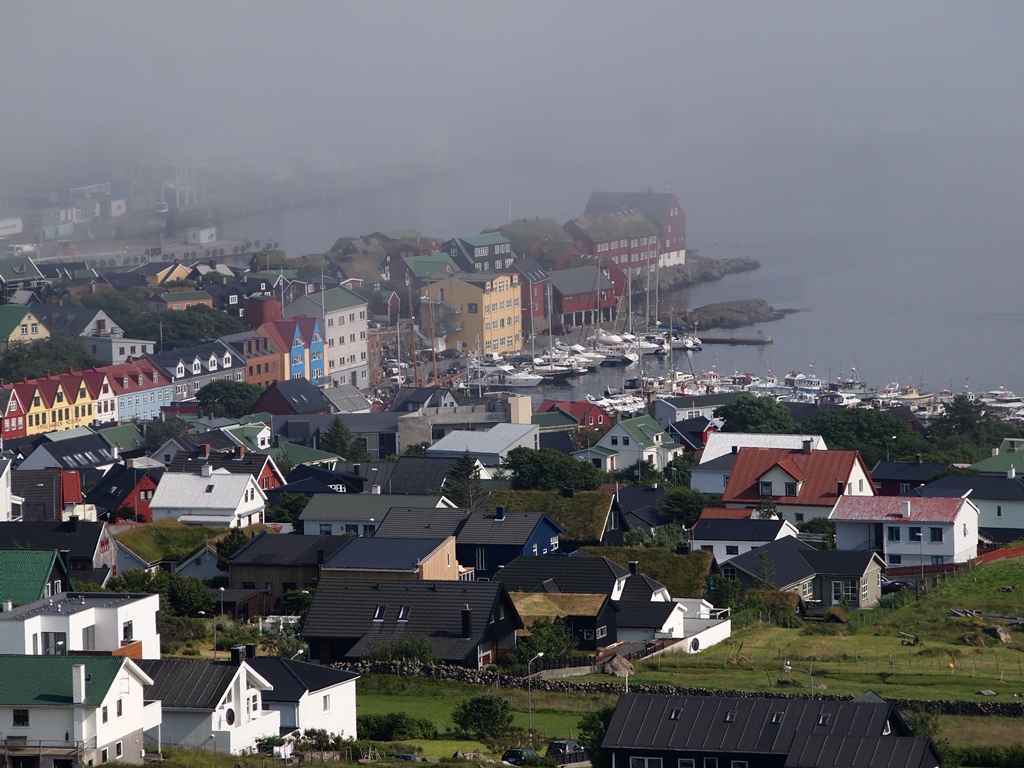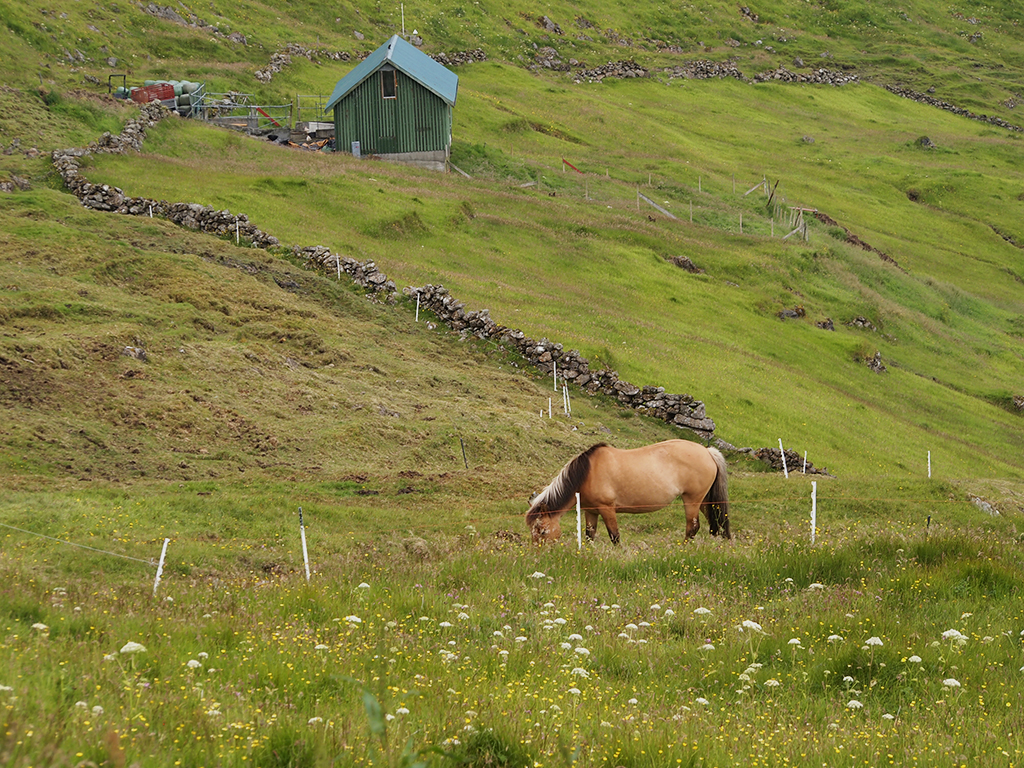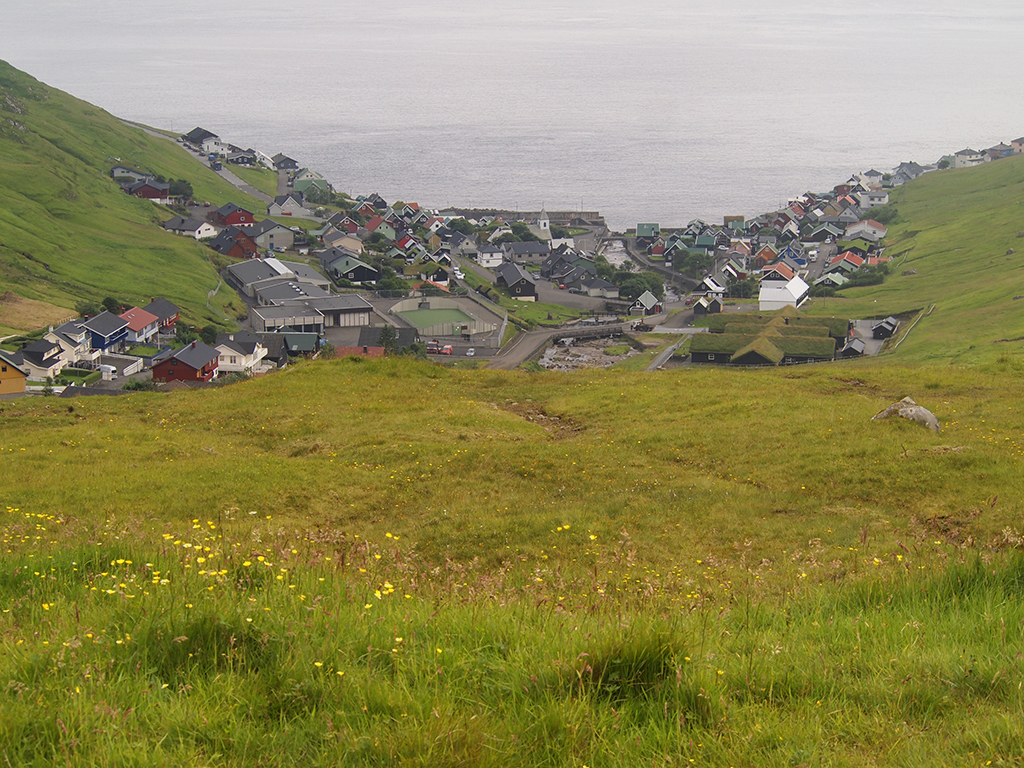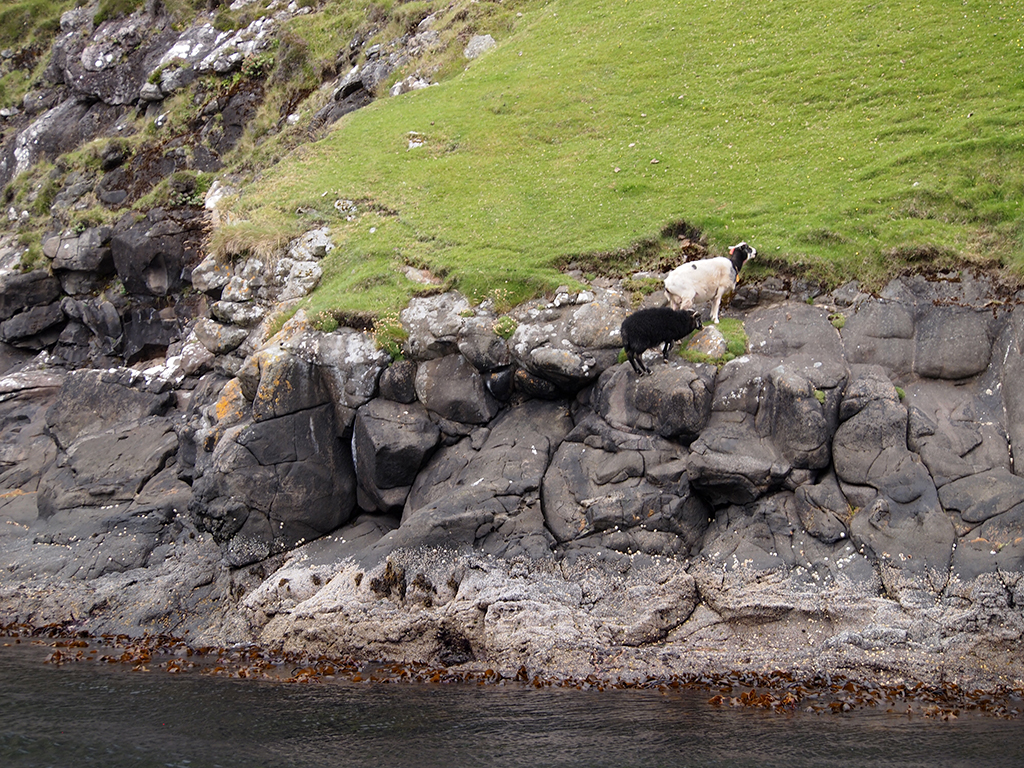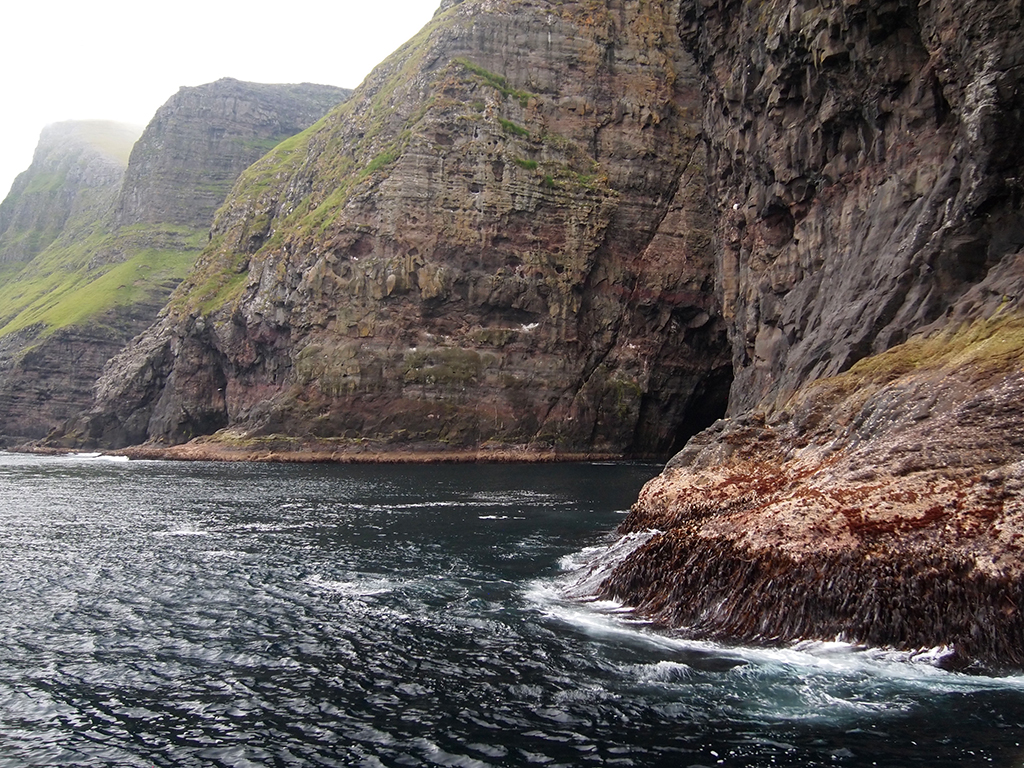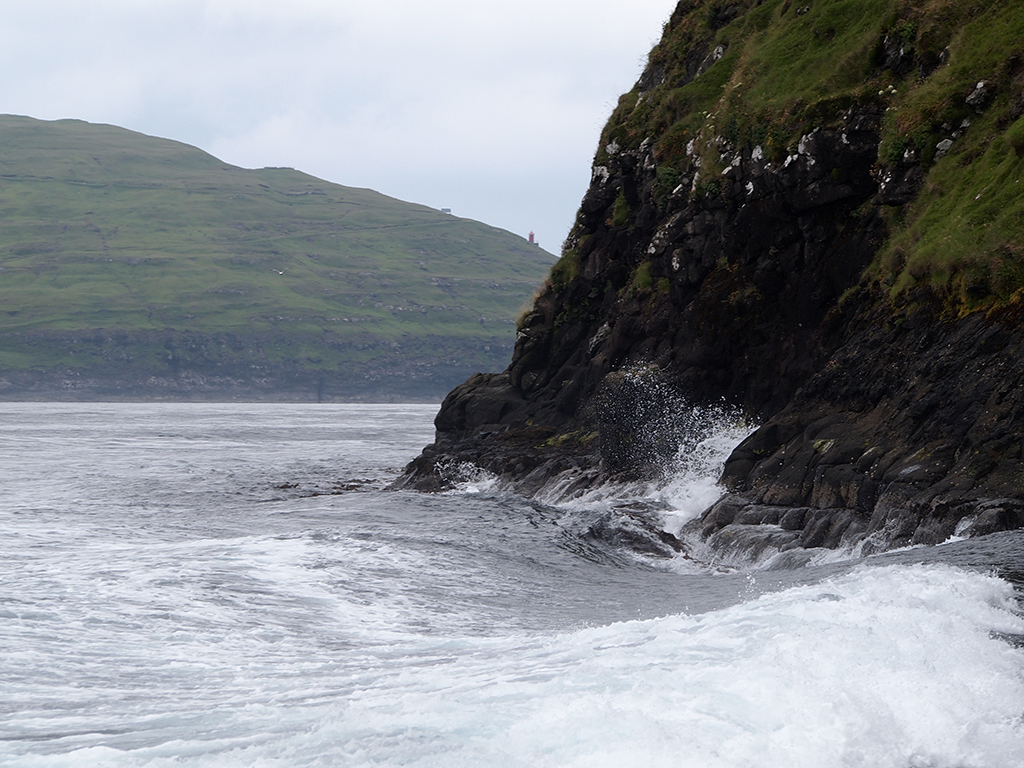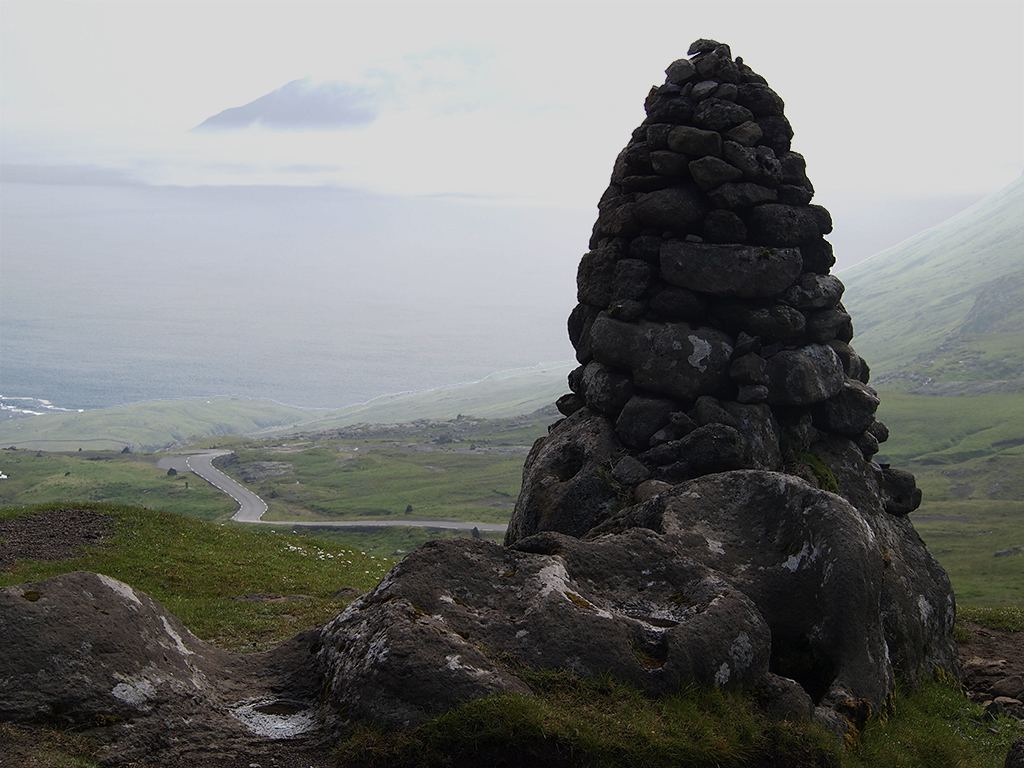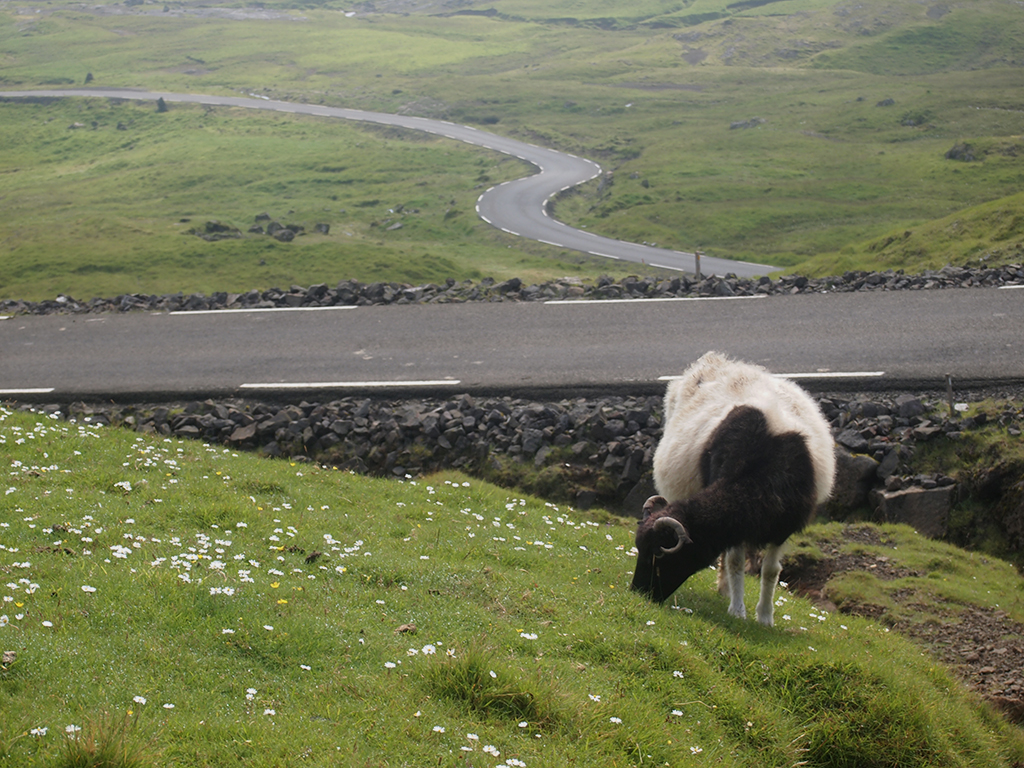Today was my best day yet. The Faroe Islands are one of the most beautiful places I have ever been. Although Tórshavn, the capital, remained enshrouded in fog the entire day, luckily, my chosen excursion to the Vestmanna Seacliffs took us out of the fog bank and exposed us to a small taste of the impressive scenery of this place.
The Faroe Islands is an archipelago of 18 islands, all but one or two of them inhabited. The overall arrowhead shape is sliced diagonally into parallel strips separated by narrow sounds. The terrain is extremely mountainous, the west side of each of the major islands consisting of high, craggy volcanic cliffs, and the eastern side carved out by deep green fjords.
Our bus ride climbed out of the fog of Tórshavn, ever higher and higher on brand new roads into the bright green, grass-covered steeps of Streymoy, the largest of the Faroe Islands. There are no trees anywhere, and the slopes are ribboned with streambeds (currently waterless from the lack of rain). To conquer the mountainous terrain, the Faroese have built tunnels under the sounds and mountains to make travel easier, and our trip to Vestmanna, at the end of the road on the west side of the island, took us through two of them.
Houses are dwarfed by the landscape and appear like brightly colored dollhouses. Sheep graze everywhere, mostly running free on the impossibly steep elevations. Fog rolled in and out of the undulating valleys. The ocean is always close at hand, sometimes far below as the road twists up, around, and over the landscape.
At Vestmanna, we boarded a fast motorboat, where I commandeered a corner seat at the back of the boat so I could take photographs. Although the sky was gray, the visibility was quite good. The trip took us out of the Vestmanna inlet away from the settlement and towards the open sea.
The seacliffs run across the entire end of the island, rising ever higher, dropping precipitously into the ocean. In a way, the heights reminded me of the Na Pali coast on the Hawaiian island of Kuauai. But these cliffs are rocky on the bottom half, with vertical grassy slopes on the top half, the ubiquitous sheep somehow managing to graze without tumbling into the sea.
The further along we traveled, the higher the cliffs rose from the sea. The sea had gouged out pocket caves into the rocks, with arches and stacks, and blue glacial water in tiny coves. There were bird nests everywhere, and a few white heads poking out, although most of the birds had already flown.
Altogether, the boat ride lasted about 2-1/2 hours. Oh the return trip, the captain turned up the power and raced us back to our starting point with a tremendous wake.
On the way back to Tórshavn, the bus driver and tour guide treated us to the old road over the mountain— in equally fine shape as the highway— so we could see more banks of fog rolling around the upper peaks, temporarily exposing various points of land jutting out of the mists. It is easy to see why the natives tell stories about strange little people who live in the mountains.
The Faroe Islands are about as remote as you can get, but they are truly fascinating, and I hope we can return some day.
Photos © 2014 P.J. Gardner. All rights reserved.

